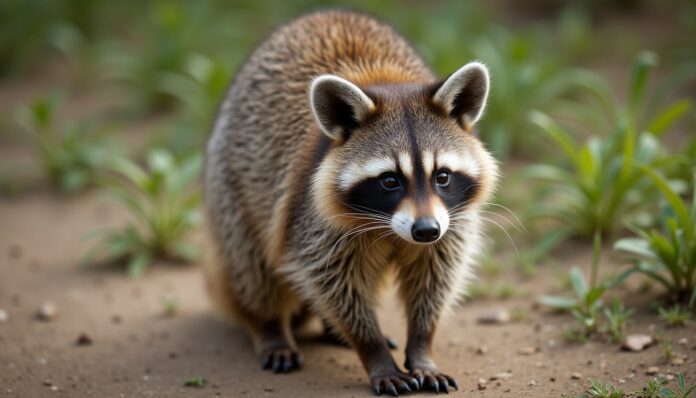Ever restless, curious, and hyperactive, raccoons are creatures loved by many. Some people even keep them as pets, although it’s not an easy task. In a home, there are few places a bored raccoon can’t reach, and locking all the drawers and doors is not only futile but also cruel—when raccoons can’t access what they want, they often become hysterical, sometimes leading to depression.
So, it’s best to think twice before deciding to have one of these animals as a pet.
Facts About Raccoons
- These animals aren’t particularly afraid of people and often sneak into homes to steal something edible.
- Originally, raccoons were native only to the New World, but explorers brought the raccoon to Europe. This species adapted well to the vastness of Eurasia.
- From a zoological standpoint, raccoons are distant relatives of bears.
- After giving birth, a mother raccoon feeds her young several times an hour, up to 20-25 times a day, with short breaks for sleep.
- Baby raccoons are born deaf and blind. They develop these senses only around the third week of life.
- Raccoon paws have highly sensitive receptors that can provide the animal with complete information about an object even if it doesn’t look at it. This is why raccoons love to touch and manipulate everything they come across.
- The name “raccoon” in English comes from their habit of washing everything they can find in water.
- Their hind legs are incredibly flexible—the joints can bend 180 degrees.
- Unlike most other mammals, a raccoon can climb down a tree headfirst without fear.
- Female raccoons always have backup dens where they can quickly move their young in case of danger. Sometimes they have as many as ten or more of these reserve shelters.
- Raccoons often live in tree hollows or among roots. They don’t dig burrows themselves but readily occupy those abandoned by others.
- Thanks to their sensitive whiskers (vibrissae) that can detect even the slightest breeze and their excellent night vision, raccoons can run at full speed even in complete darkness without fear of bumping into something and getting hurt.
- A raccoon caught in a hopeless situation often plays dead, hoping that the predator will disdain the carcass.
- Like cats, raccoons can jump from great heights and land softly. There have been documented cases where they jumped from heights of more than 10 meters without harming themselves.
- In captivity, raccoons can live for over 20 years, but in the wild, their average lifespan is usually half that.
- Surviving winter is tough, so raccoons store food and huddle together in groups to stay warm. Sometimes up to ten raccoons will share a den during winter.
- Raccoons living in warm climates don’t hibernate, but those in northern regions usually sleep through the winter. However, their sleep is very light, and they wake up at the slightest sign of danger, ready to defend themselves or flee.
- These animals are very intelligent. Those kept as pets, for example, often quickly learn how faucets work and can easily turn them on when they want water.
- The Latin name for the star Procyon means “raccoon” in that ancient language.
- Raccoon front paws closely resemble human hands.
- These animals have a strong immune system—they are resistant to most diseases. However, they can still be carriers.
- Raccoons are not picky eaters. They consume small rodents, birds and their eggs, fruits, berries, and even human leftovers—they’ll eat just about anything.
- An adult raccoon can weigh between 10-12 kg, comparable to the weight of Maine Coon cats, the largest domestic cat breed.
- After raccoons were discovered by Christopher Columbus’s expedition, scientists debated for a long time about which family they belonged to—bears, cats, dogs, or badgers. It took a couple of centuries before they were classified as their own genus.
- Before hibernation, raccoons gorge themselves to build up fat reserves, increasing their body weight by 50-70% from normal. As a result, they can become quite fat.
- Raccoons fight only as a last resort when they have no other choice. They prefer to flee, and if that doesn’t work, they play dead. If that fails to fool the predator, they will defend themselves with surprising ferocity.
- These animals rarely stray far from home or change their living area. Once they find a place they like, they usually limit their roaming to the nearby surroundings.
- Raccoons of the same species living in northern regions usually have larger litters than those in the south. They typically give birth to 2-5 young.
- Like humans, raccoons first grow milk teeth, which are later replaced by permanent teeth.
- Raccoons rarely settle far from bodies of water because they almost always wash their food before eating it.
